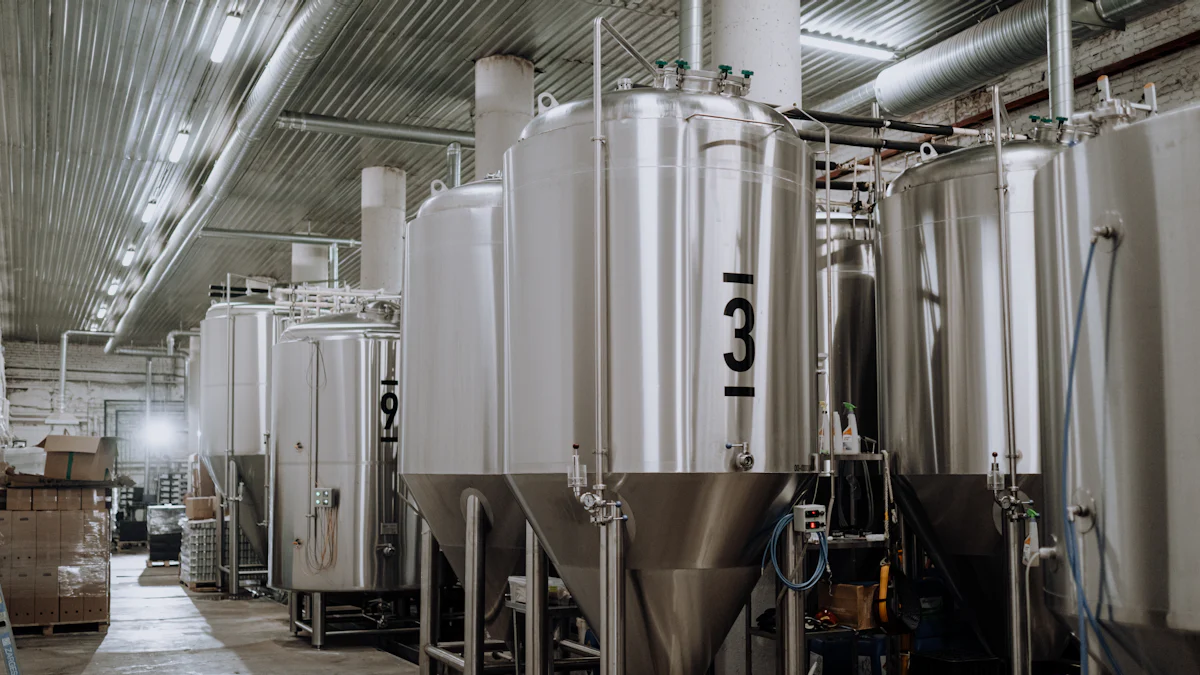Wine Fermentation Tanks

The best wine fermentation tanks for a winery depend on various factors, including the winery’s size, production volume, budget, and winemaking style. Each type of fermentation tank has its advantages and may be more suitable for different wineries. Here are some common types of wine fermentation tanks used in wineries:
1.Stainless Steel Tanks:
Stainless steel tanks are the most popular choice for wineries of all sizes. They are easy to clean, sanitize, and maintain, and they offer excellent temperature control during fermentation. Stainless steel tanks come in various sizes and shapes, including open-top, closed-top, and variable capacity tanks. They are ideal for both red and white wine fermentation.
2.Oak Fermentation Tanks:
Oak fermentation tanks, often made of French or American oak, are used to impart oak flavors to the wine during fermentation. The use of oak tanks can add complexity and enhance the wine’s aromas and flavors. However, they are more expensive than stainless steel tanks and require special care to avoid contamination.
3.Concrete Fermentation Tanks:
Concrete fermentation tanks are becoming popular again in the winemaking industry. They offer excellent temperature stability and allow for gentle micro-oxygenation, which can benefit certain wine styles. Concrete tanks can also contribute to the wine’s texture and mouthfeel.
4.Open-Top Fermentation Tanks:
Open-top tanks, whether made of stainless steel, wood, or concrete, allow for traditional fermentation methods. They provide more exposure to oxygen, which can be beneficial for certain red wine fermentations, especially during punch-down or pump-over techniques. Open-top tanks also facilitate easy manual punch-down of the grape cap during red wine fermentation, which can enhance color extraction and tannin development.
5.Closed-Top Tanks:
Closed-top tanks are suitable for both red and white wine fermentation. They are sealed vessels, which helps prevent unwanted oxidation during fermentation. They are often equipped with cooling systems for precise temperature control.
6.Variable Capacity Tanks:
Variable capacity tanks are stainless steel tanks with floating lids that can be adjusted to match the volume of wine during fermentation. This allows winemakers to minimize headspace and exposure to oxygen, making them useful for small-batch or experimental productions.
7.Temperature-Controlled Tanks:
Temperature control is crucial during fermentation to achieve desired flavor profiles and prevent off-flavors. Many modern fermentation tanks, regardless of the material, come with cooling and/or heating options for precise temperature regulation.
Ultimately, the best wine fermentation tanks for a winery will depend on the winemaker’s preferences, the winery’s production goals, and the specific wine styles being produced. It’s essential to consider factors such as temperature control, ease of cleaning, oxygen exposure, and long-term maintenance when selecting the appropriate tanks. Consulting with experienced winemakers or industry experts can also be valuable in making the best choice for your winery’s needs.



